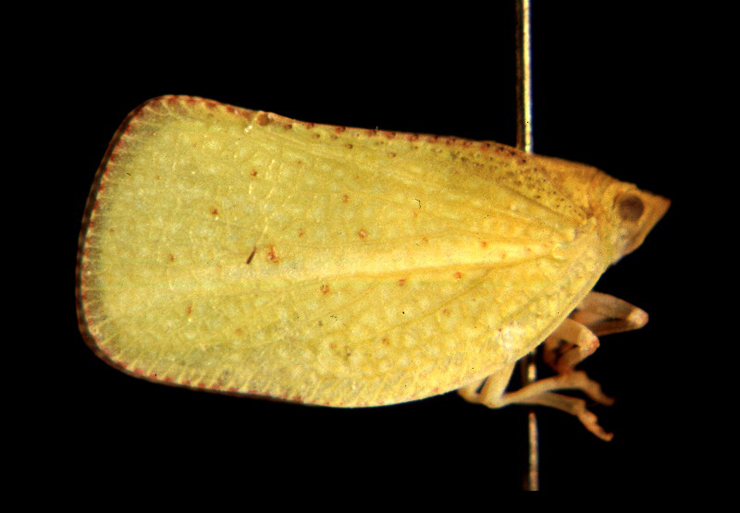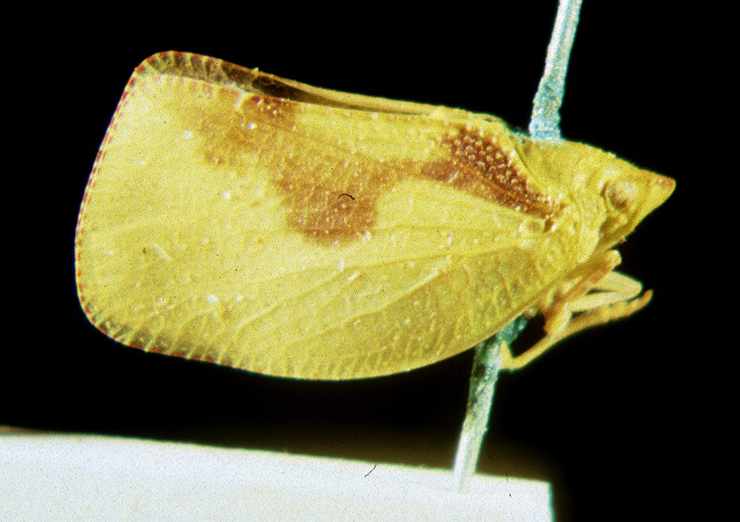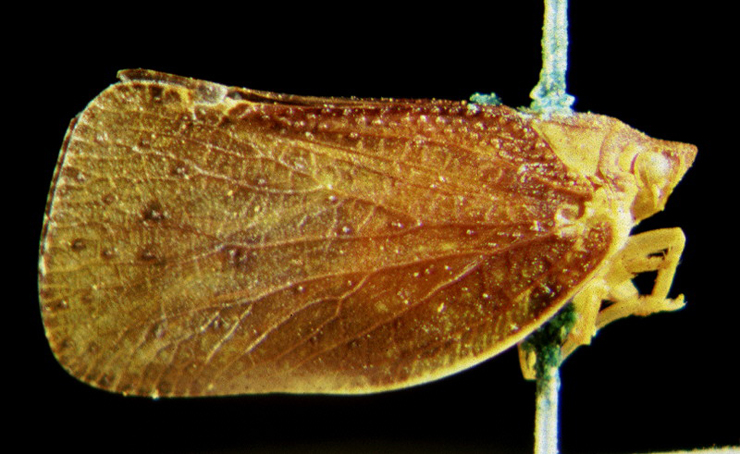Siphanta patruelis (Stål)
Caution
Many of the insects depicted on these pages are outwardly similar and you should not use photographs as the sole means of identification. These pages form part of a scientific key which will assist a trained entomologist to identify the species accurately.
(Flatidae: Flatinae: Siphantini)
This species exhibits a range of different colour variants (see below), some of which have been separated as different species in their history. S. toga was erected for a form with an oblique pale stripe across the tegmen. S. toga var. maculata was created for a form with a varying amount of dark brown colouring on the tegmen, including a form with the posterior (claval) half of the tegmen completely brown, for which Distant (1910a) provided the name P. infumata. Often this form has a brown spot with a white centre in the middle of the tegmen. Fletcher (2002) discussed these and added a new form "form drysdalensis" with white oblique striping through the tegminal cells. [update: 11.x.2002]Typically, S. patruelis is easily recognised by the shape of the head and tegmen and the presence of black-tipped granules over the tegmen. These granules often bear red colouring as well.
Typical form

 Form "toga" (originally Siphanta toga Kirkaldy 1906)
Form "toga" (originally Siphanta toga Kirkaldy 1906)


 Form "drysdalensis" Fletcher (2002)
Form "drysdalensis" Fletcher (2002)
